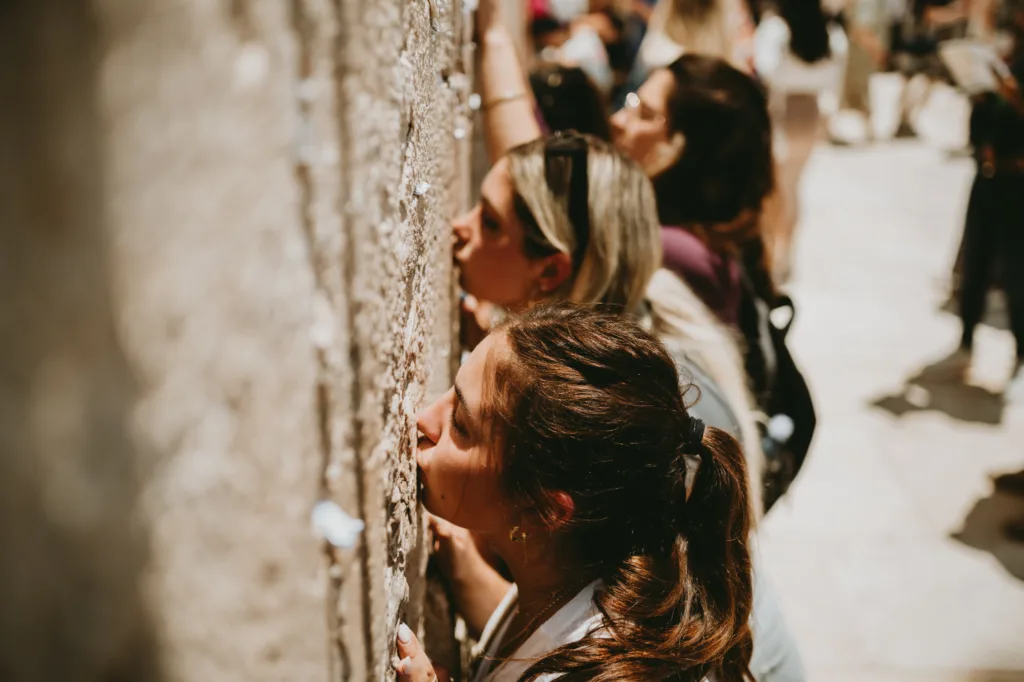What is Tisha B’Av?

What is Tisha B’Av?
Tisha B’Av, the ninth day of the Jewish month of Av, is recognized as the saddest day on the Jewish calendar. It is a day of mourning for tragedies across Jewish history, most particularly the destruction and loss of the first and second Temple and Jerusalem nearly 2,000 years ago.
Over the last 100 years, Tisha B’Av has also become a day of mourning for the lives lost in the massacres of Jewish communities in the Middle East and North Africa, the pogroms of Eastern Europe, and the Holocaust. Poems and prayers recited on the day commemorate events and individuals killed in the name of antisemitism.
In grieving the loss of Jewish lives throughout history, there is a small spark of hope for the future that is built into the day. In the haftarah (the book of Prophets read following a Torah reading) read on the second day of Rosh Hashanah, the prophet Jeremiah speaks about an interaction that tradition places in the moment the Jewish people walked past Rachel the Matriarch’s grave on their way into exile following the destruction of the Temple and Jerusalem nearly two millennia ago.
Jeremiah says, “A voice is heard on high, wailing, bitter weeping—Rachel weeps for her children. She refuses to be comforted for her children, who are gone.” Rachel feels the pain and anguish of her children — the Jewish people — and she weeps for their loss, their loneliness, and the years of suffering they will face. And then, in a moment between her tears, God responds to Rachel and says, “Restrain your voice from weeping, your eyes from shedding tears…there is hope for your future…your children shall return to their country.” (Jeremiah 31:15-17, JPS Translation) God promises Rachel that her children will survive as a family and as a people, and they will come home to her, in the land of Israel.
Jeremiah teaches that in one of the darkest moments in Jewish history, a promise of return and rebuilding is born. Big moments in Judaism often hold sorrow and joy at the same time: we remember the destruction of Jerusalem at weddings, Israel’s Memorial Day (Yom Hazikaron) and Independence Day (Yom Ha’atzmaut) are commemorated on back-to-back days, and, on Tisha B’Av, we begin to reflect on the promise of hope and return that the Jewish people nurtured for thousands of years and that found the beginnings of fulfillment in the modern State of Israel.
Traditional ways to observe Tisha B’Av
Throughout history, the Jewish people have mourned the loss of Jerusalem as a symbol of the loss of Jewish sovereignty and religious freedom. The traditional practices observed on Tisha B’av reflect that loss and make space for mourning, reflection, and a communal expression of grief. Here are some ways Jewish communities have traditionally observed Tisha B’Av:
- Refraining from eating, drinking, listening to music, studying Torah, sitting on chairs, and wearing leather shoes. These are all drawn from traditional mourning practices that a person might observe when they lose a close family member.
- Reading the book of Eicha, or Lamentations, as a community. Lamentations expresses the anguish the Jewish people experience during the destruction of Jerusalem and the Temple.
- Spending the day in study and reflection of tragedies in Jewish history, such as the Holocaust.
Ways to think about observing Tisha B’Av this year:
Looking for a way to connect with Tisha B’Av this year? Check out the suggestions below:
- Tisha B’Av is traditionally observed as a fast. Whether or not you refrain from eating and drinking this year, fast days are a good time to reflect on food insecurity in your community. Is there a community kitchen or a shelter where you can offer your time and energy this year?
- Jewish families often carry years of stories and traditions that survive, despite tragedy and upheaval. Think about speaking with relatives, family friends, or community members about your family or community’s history as a way to connect with the historical aspect of Tisha B’Av.
- What are you hopeful about for the coming year? Are there steps you can take or practices you can commit to in order to make that hope a reality?
As Tisha B’Av ends and the calendar moves towards Rosh Hashanah, may the year ahead bring more hope than darkness, and may our communities across the world find safety and joy in their Jewish stories.